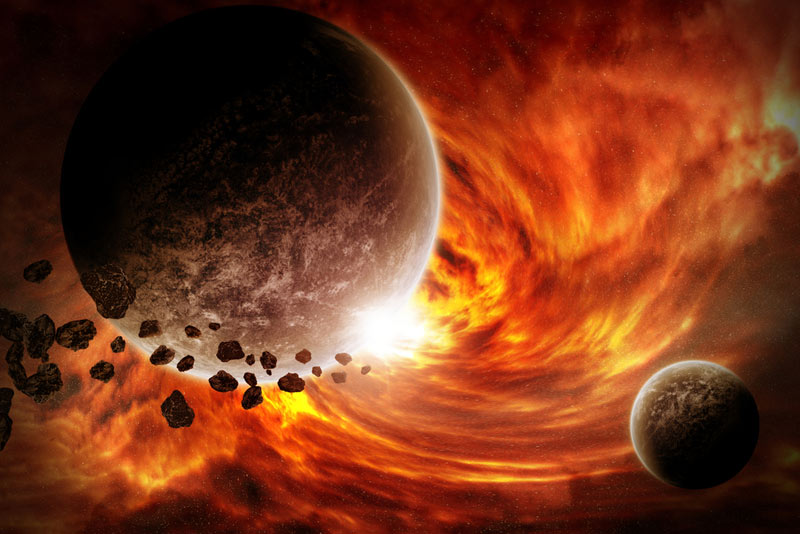Mayan What? Apocalypse 2012 Quiet So Far

With rumors of a Mayan apocalypse making the rounds online and at the water cooler, when do we know the world is out of danger from the various astronomical and other cataclysms claimed by some to spell doom?
Some have pegged the end on 12/21/12 at the moment of the winter solstice, which at one point had been estimated by the U.S. Naval Observatory to take place at 11:11 UTC, or 6:11 a.m. EST. The Northern Hemisphere's winter solstice, when the top half of the planet (everything north of the equator) will face away from the sun, actually occured at 11:12 UTC, or 6:12 a.m. EST. Either way, the moment has ticked by, and the world is still here.
Today does mark an end, to the 13th 144,000-day cycle (called a b'ak'tun) of the ancient Mayan Long Count Calendar. The least worried about this rumored doomsday date? The Mayas.
Their calm comes amidst some particularly startling freakouts elsewhere: Chinese farmers making "doomsday escape pods;" NASA being flooded with worried phone calls; and supposedly mystical mountains in Europe getting overrun with apocalypse tourists. Oh yeah, and some kids got two days off school. In Michigan, two counties cancelled classes Thursday and Friday, citing both fears about school violence after the elementary school shooting in Connecticut last week and rumors about the end of the world causing distraction, according to CBS Detroit. [Mayan Doomsday (Not): Coverage & Countdown]
This week in the northwestern province of Qinghai, the government arrested more than 400 members of a doomsday-preaching group called the Church of the Almighty God, confiscating computers, banners, books, cellphones and other items, The Guardian reported.
Like many rumored doomsdays -- from a 1910 scare tied to Halley's Comet and a doomy divination by televangelist Pat Robertson in 1982 to TV preacher Harold Camping's 2011 claim -- that have come and gone, this one seems to have left Earth unscarred. Even so, social scientists have said the Mayan apocalypse does stand out from the rest. Most past scares have been sparked by charismatic leaders issuing divine proclamations. The Dec. 21 scare, however, was more of a grassroots prediction that seemed to pop up almost entirely online.
But where did it come from? Dec. 21 on the Western calendar likely corresponds to the end of the 13th b'ak'tun of the Mayan Long Count Calendar, one of three calendars the ancient Maya used to count time. The calendar works by counting first days, then 20-day chunks of time, then 260-day periods and 7,200-day periods. Ticking up like a car odometer, the calendar finally keeps track of 144,000-day blocks of time called b'ak'tuns.
Get the world’s most fascinating discoveries delivered straight to your inbox.
Continuting the cycle, 20 tuns become one ka'tun (7,200 days total) and 20 ka'tuns become one b'ak'tun (144,000 days total, or close to 400 years).
By matching Mayan calendar dates to our own calendar, researchers have concluded that Dec. 21, 2012, is the likely date for the last day of the 13th b'ak'tun. (Dec. 23 or Dec. 24 are other possibilities, thanks to different units on the calendar turning over at different times of day.)
Written in modern translation, that makes Dec. 21, in Mayan date, 13.0.0.0.0. Tomorrow, Dec. 22 will be 13.0.0.0.1. The ancient Maya believed that 13 b'ak'tuns represented one full cycle of creation, but they did not predict the world would come to an end. In fact, their calendar includes some rarely-used units of time even larger than b'ak'tuns that would have allowed the Maya to count millions of years into the future, had their empire not crumbled around A.D. 900.
Follow LiveScience on Twitter @livescience. We're also on Facebook & Google+.

Stephanie Pappas is a contributing writer for Live Science, covering topics ranging from geoscience to archaeology to the human brain and behavior. She was previously a senior writer for Live Science but is now a freelancer based in Denver, Colorado, and regularly contributes to Scientific American and The Monitor, the monthly magazine of the American Psychological Association. Stephanie received a bachelor's degree in psychology from the University of South Carolina and a graduate certificate in science communication from the University of California, Santa Cruz.


